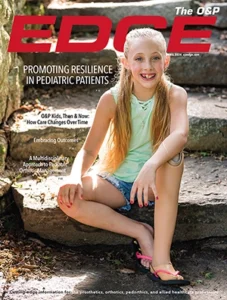The Engineering and Physical Sciences Research Council (EPSRC) has awarded another £1.5 million ($1.3 million) to Ravinder Dahiya, PhD, a professor at the University of Glasgow, Scotland, who has plans to develop ultra-flexible, synthetic “brainy skin” that can think for itself.
Neuromorphic Printed Tactile Skin (neuPRINTSKIN), the superflexible, hypersensitive electronic skin, may one day be used to make more responsive prosthetic devices for individuals with amputations, or to build robots with a sense of touch. The e-skin, made from silicon-based printed neural transistors and graphene, reacts like human skin, which has its own neurons that respond immediately to touch rather than having to relay the whole message to the brain. The new version is more powerful, less cumbersome, and works better than earlier prototypes developed by Dahiya and his Bendable Electronics and Sensing Technologies (BEST) team at the university’s School of Engineering.
“Human skin is an incredibly complex system capable of detecting pressure, temperature, and texture through an array of neural sensors that carry signals from the skin to the brain,” Dahiya said. “Inspired by real skin, this project will harness the technological advances in electronic engineering to mimic some features of human skin, such as softness, bendability and now, also sense of touch.”
The additional funding extends Dahiya’s fellowship by three years, during which he will add a new neural layer to the e-skin that he has already developed using printing silicon nanowires.
“By adding a neural layer underneath the current tactile skin, neuPRINTSKIN will add significant new perspective to the e-skin research, and trigger transformations in several areas such as robotics, prosthetics, artificial intelligence, wearable systems, next-generation computing, and flexible and printed electronics,” Dahiya said.
To read more about Dahiya’s work developing synthetic skin, visit “Solar-powered Skin Could Provide Sense of Touch to Prostheses.” https://opedge.com/Articles/ViewArticle/2017-03-23/NEWS_2017-03-23_05
Editor’s note: This story was adapted from materials provided by the University of Glasgow.




